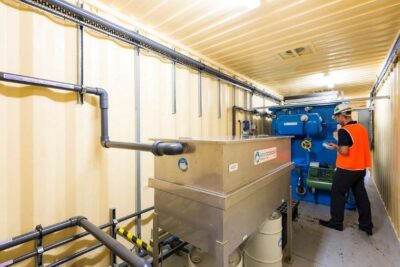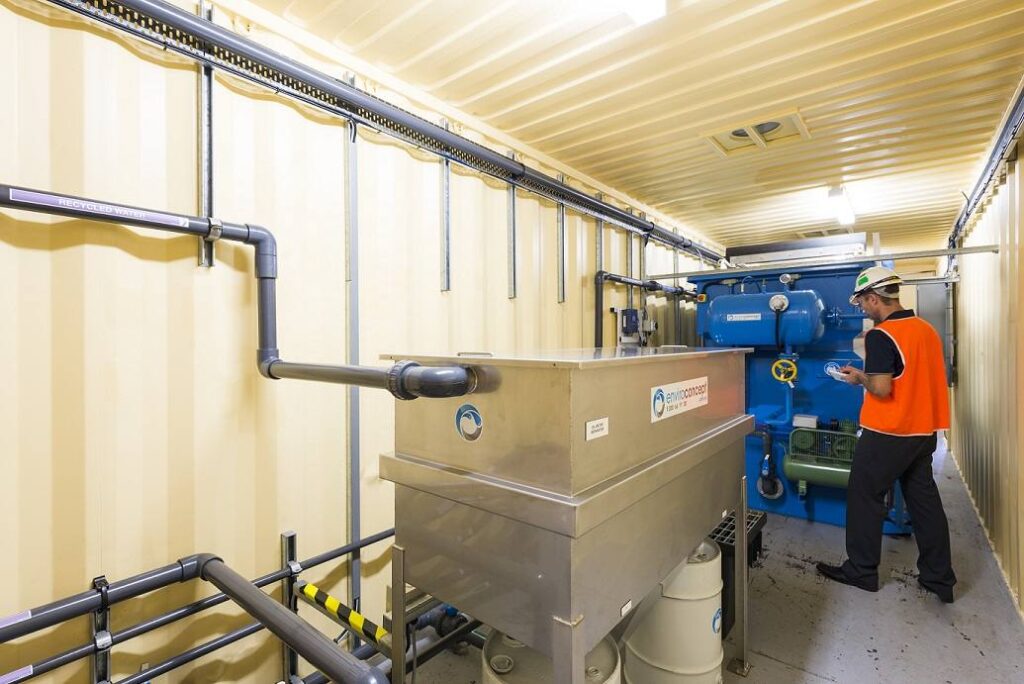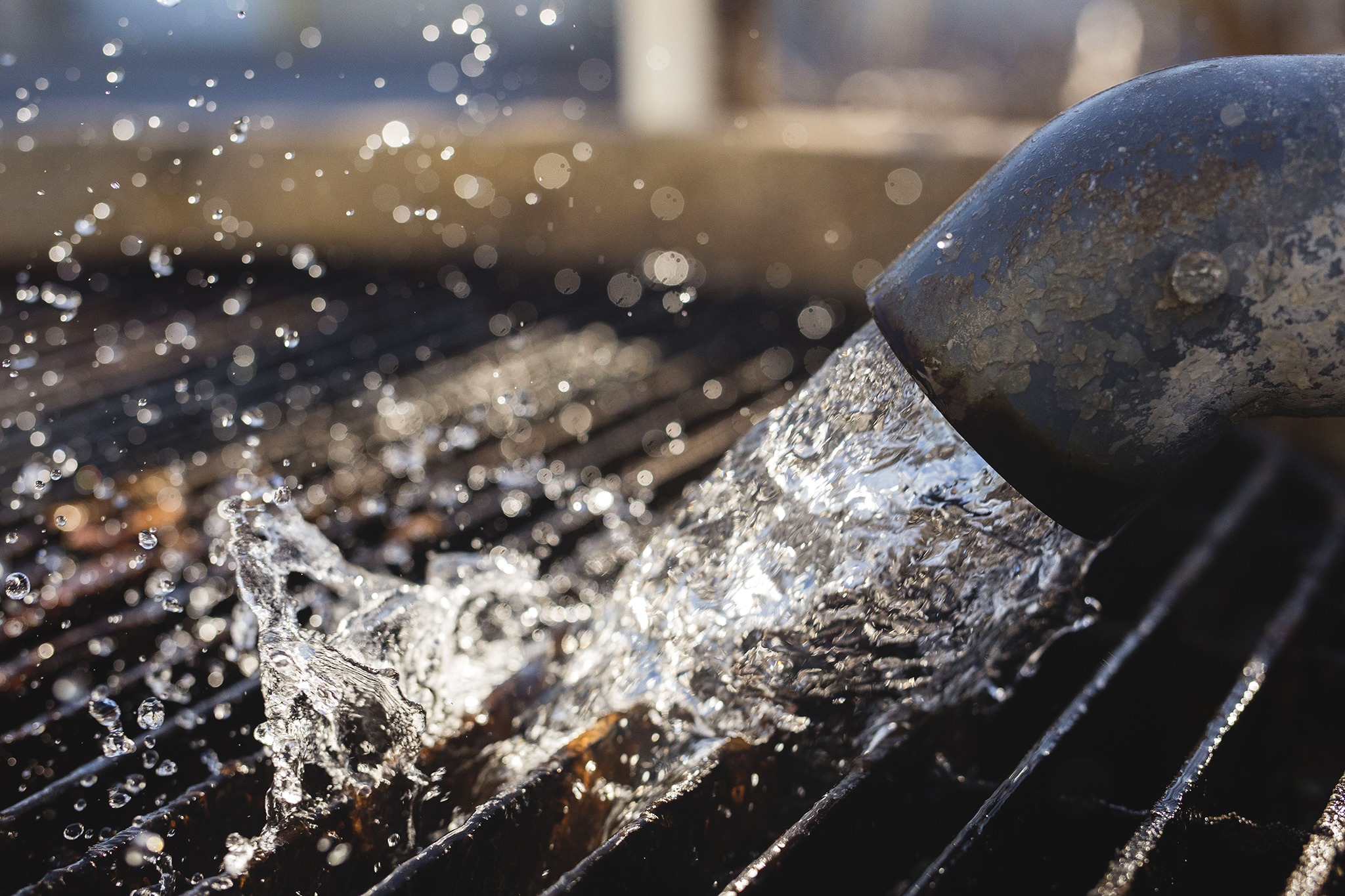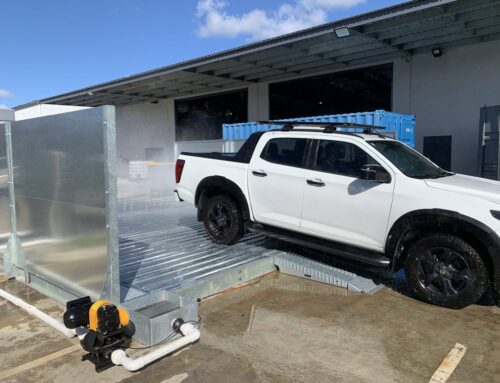Wash bay wastewater might seem like a minor detail in day-to-day industry operations—but ignoring it can lead to the case of fines, shutdowns, and major environmental damage. Whether you’re operating in the mining, transport, or automotive industry, knowing where your wash water from your wash bays ends up is critical to staying compliant and efficient.
What Is Wash Bay Wastewater? Understanding Its Sources and Risks
Wash bay wastewater is the by-product of cleaning vehicles, machinery, heavy equipment, parts, and surfaces in a wash bay. This includes everything from a portable wash bay system at a remote depot to a high-volume car wash in an urban zone. The runoff from wash bays typically contains a mix of oil, grease, detergents, sediments, and metals.
Typical sources of wash water include:
- Fleet and heavy equipment washdowns
- Routine maintenance areas and truck depots
- Mining operations and unroofed wash setups exposed to rain
- Commercial car wash bays and dealership facilities
Without the right wash bay design, equipment, and water treatment systems in place, these contaminants can get into stormwater drains, groundwater, or directly into ecosystems. The case of non-compliance can result in legal action, operational shutdown, and irreversible environmental harm. Contact EnviroConcepts today for compliant portable wash bay systems.
Common Contaminants in Wash Bays—and How They Affect the Environment
Is the case of generic wash solutions slowing you down? A one-size-fits-all approach to wash water management fails to consider the variety and severity of pollutants that accumulate in wash bays.
The most frequent contaminants include:
| Contaminant | Origin | Risk |
| Oil and grease | Vehicle engines, hydraulics | Waterway contamination |
| Heavy metals | Brakes, rust, machinery | Toxic to marine life and humans |
| Detergents and soaps | Cleaning products | Depletes oxygen in waterways |
| Silt and sediment | Soil, debris, unsealed yards | Clogs systems, damages ecosystems |
Left untreated, these pollutants harm biodiversity, reduce water quality, and pose health risks to local residents. Proper pre treatment with equipment like oil water separators and silt traps in wash bays is vital to preventing these outcomes.
Why Wash Bay Wastewater Matters: Environmental and Legal Consequences
Avoid the case of fines—contact EnviroConcepts and upgrade to compliant wash solutions now. Australian environmental laws are strict, and councils across the country enforce penalties for illegal or non-compliant discharge. Wash water from wash bays must be treated before entering sewer systems, and discharge quality must meet local authority trade waste criteria.
Consequences of improper wash water management include:
- Penalties averaging $100,000 in the case of non-compliance
- Revoked operating licenses
- Increased scrutiny from environmental agencies
- Long-term reputational damage
Staying compliant starts with choosing the right water treatment systems and ensuring your wash bay design, whether modular, portable, unroofed, or more, includes proper drainage, holding tanks, and filtration mechanisms.
How to Treat Wash Bay Wastewater: Filtration and Separation Methods Explained

Ready to boost efficiency with tailored water treatment systems? Treating wash water effectively requires a multi-stage approach that separates and removes contaminants before discharge or reuse.
Core treatment components include:
- Oil water separator – separates hydrocarbons from the water
- Silt traps – remove solids before they reach treatment tanks
- Flush diversion system – isolates the first flush of high-contamination water
- Water recycling systems – treat and reuse water on-site
- Holding tanks – store wash water for gradual processing or off-site disposal
Each treatment stage can be adapted for permanent or portable wash bay setups, allowing flexible and scalable solutions for every industry.
Wash Bay Compliance: Navigating Permits and Legal Requirements
Think custom solutions take too long? Think again. Securing legal compliance involves understanding and meeting specific requirements for water discharge permits, infrastructure, and system performance.
To comply, operators must:
- Apply for a trade waste permit from their local authority
- Install approved water treatment systems such as oil water separators
- Ensure the wash bay floor includes appropriate gradient and bunding
- Document pre treatment stages and discharge limits
- Respond accurately during audits
When it comes to the case of compliance, it isn’t optional—it’s essential. And with the right system, achieving it is simpler and faster than you might think. Contact our team today for assistance in navigating the compliance process.
Health and Environmental Risks from Untreated Wash Water
Untreated wash water poses direct and indirect risks to human health, employee safety, and the environment. Without effective treatment, exposure to pathogens, oils, and chemical residues becomes inevitable.
Risks include:
- Contamination of local water supplies
- Breathing hazards from airborne mist
- Soil and vegetation damage affecting nearby properties
- Health concerns for on-site workers and local residents
Installing properly designed systems with reliable filtration, holding tanks, recycling, and separation units mitigates these risks—while maintaining operational safety standards.
Eco-Friendly Wash Bay Practices: Reduce Wastewater, Boost Efficiency
You need to get custom solutions, not one-size-fits-all. Sustainability in water usage is no longer a nice-to-have—it’s a business imperative. Eco-friendly wash bay practices help reduce costs and environmental impact simultaneously.
Practical upgrades include:
- Installing high-efficiency water recycling systems
- Designing unroofed wash bays with flush diversion systems to control stormwater ingress
- Capturing rainwater for reuse through harvesting setups
- Implementing biodegradable cleaning agents
These measures enhance compliance with wash bays, boost operational efficiency, and contribute to long-term savings across your wash operations.
Wastewater Management on a Budget: Cost-Saving Tips for Your Wash Bay

Is your wash water treatment costing you too much? Many operations overspend due to outdated equipment such as oil water separators or inefficient designs. Optimizing your wash bay doesn’t have to break the bank.
Here’s how to cut costs effectively:
- Retrofit your wash bays with modular upgrades
- Use water recycling systems to reduce consumption by up to 80%
- Switch to Australian-made components that last longer and perform better
- Opt to get portable wash bay solutions to avoid costly construction delays
Australian-made systems typically offer a 10-year structural warranty, faster delivery, and better local support—making them a smart investment.
From Bay to Drain: Step-by-Step Path of Wash Bay Wastewater
Understanding the full journey of wash bay wastewater can help identify weak spots in your setup and address compliance gaps.
Here’s the typical path:
- Wash water runs off the wash bay floor during equipment or vehicle wash
- Silt traps capture solid debris and sediment
- Water enters a flush diversion system to isolate initial contaminants
- Oil water separators remove hydrocarbons and light liquids
- Treated water is stored in holding tanks or processed by water recycling systems
- Depending on system design and permits, water is either reused or discharged
Each component plays a crucial role—and missing one can compromise the entire system.
Greening Your Wash Bay: Smart Tech to Stay Ahead of Regulations
Fear missing out on the latest in wash bay technology? Automation and intelligent monitoring are now mainstream for industrial wash bays across Australia.
Smart upgrades to consider:
- Real-time sensors that detect water quality and pollutant levels
- Remote monitoring of water recycling systems
- Modular control panels for system diagnostics
- Pre-configured portable wash bays with plug-and-play setup
These innovations reduce maintenance, ensure compliance, and provide scalable solutions across a wide range of industry operations—from mining to automotive.
Built for Australia: Why Smarter Wastewater Matters Now More Than Ever
Frustrated with suppliers who don’t understand your needs? You’re not alone. Operations managers across Australia are demanding more from their systems—more durability, more compliance, and more value.
At EnviroConcepts, we build custom, Australian-made wash bays and water treatment systems designed for the harshest conditions and the heaviest equipment. From flush diversion systems to oil water separators, every component is engineered for reliability, safety, and ease of integration. Contact us today to learn more.
Whether you’re planning a full facility wash upgrade or need a portable wash bay that’s ready to deploy now—we’re here to help you stay compliant, efficient, and ahead of the curve.
Need to speak to a local expert? Contact us at 1300 661 130 or request an online estimate today.




